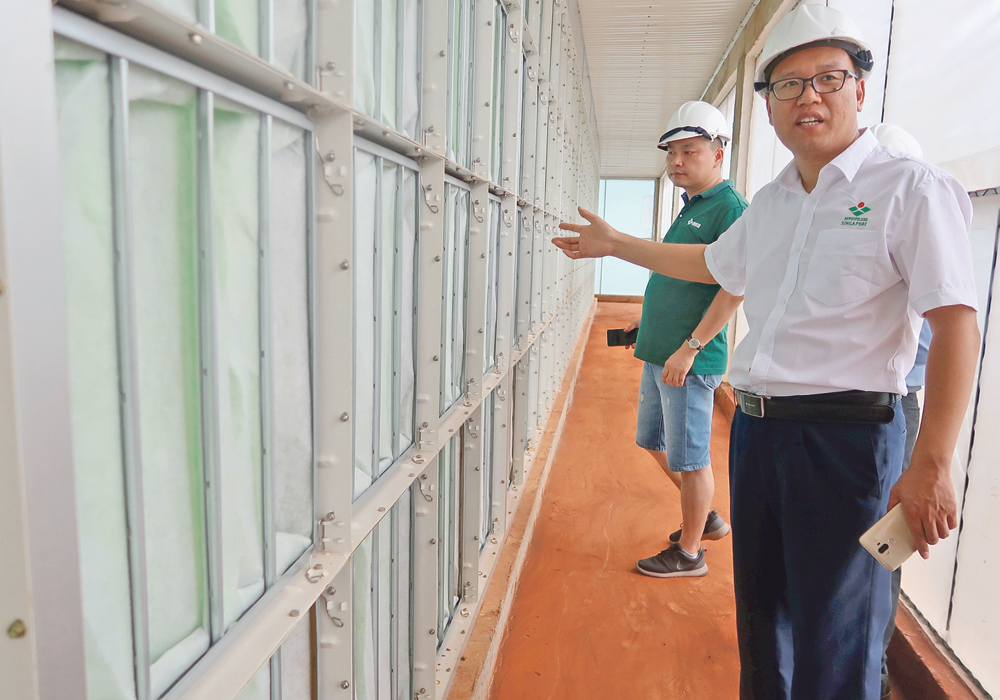Oh the irony.
Last week at a meat conference held as part of the China International Import Expo in Shanghai, a Chinese government official pleaded to international meat exporters not to take advantage of the current severe pork shortage in the country by ratcheting up prices.
A Chinese web-based news site called Sixth Tone quoted Ministry of Commerce official Wang Bin as saying: “The meat-trading enterprises and purchasing agents should establish long-term, stable, and sustainable trade relations. Don’t raise prices too much under the current market, set reasonable prices.”
Read Also

Critical growing season is ahead for soybeans
What the weather turns out to be in the United States is going to have a significant impact on Canadian producers’ prices
Too bad China didn’t value stable and sustainable trade relations when it blocked Canadian pork and beef for an unreasonable four months, failed to engage with Canada over supposed problems with canola, stopped buying our soybeans and arrested two Canadians in China on highly suspicious charges.
A Chinese Foreign Ministry spokesperson Geng Shuang quoted in the Globe and Mail said the resolution of the problem over meat did not signal a thawing in Chinese-Canadian relations. That would come only if Canada releases Huawei Technologies chief financial officer Meng Wanzhou, on house arrest in Vancouver awaiting hearings on an American request to extradite her to the United States to face charges there.
China rather accepted Canada’s solution to the meat impasse because China is desperate for meat.
The devastation that African swine fever is causing to its hog herd has caused retail pork prices in China to recently soar by eight to 10 percent a week.
Initially the ASF outbreak did not cause China’s pork prices to rise because measures taken to contain the outbreak led to more pigs going to slaughter. But now the herd is much reduced and pork supplies are tight and expensive.
Compared to last year at the same time, wholesale pork is up 164 percent.
China’s retailers are starting to plan for the New Year holiday and a few weeks later the Spring Festival Holiday when meat consumption soars.
So the government is trying to line up new offshore supply in an effort to control prices.
China last week signed a $100 million deal with Danish pork exporter Danish Crown for supply into 2020.
It also approved seven processing plants in Brazil to export by products such as tongues, snouts, ears and tails. That follows on export licences granted to 25 Brazilian beef, chicken, pork and even donkey meat plants in September to ship to China.
China is also approving Argentine slaughterhouses for export.
The China-U.S. trade war, which includes 72 percent tariffs on American pork, limited imports from America for much of this year but recently China has purchased product as the two countries cool tensions and try to work out final details on a first phase deal that they hope to sign this year and would roll back tariffs on both sides.
At this point, the Chinese are not buying enough American pork to cause U.S. packers to raise the number of pigs they buy beyond what was expected.
We must remember that although China might be posting big percentage increases in pork imports, those increases are from what were small amounts in previous years. Other countries such as Mexico and Japan historically were much bigger buyers.
So although China and Hong Kong together in September increased the amount of American pork purchased by 322 percent over the year before, the total amount of American pork exports in the month were up only 10.6 percent.
Indeed, the Daily Livestock Report issued by the CME Group on Nov. 8 said that U.S. weekly slaughter in the past few weeks has been a little less than what would be expected based on the USDA’s September hogs and pigs report.
Packers are comfortable with the supply of pigs available and so they are not aggressively buying.
Aggressive buying will happen only when Washington and Beijing complete the phase one deal and drop their tit-for-tat tariffs.
In the meantime, American hog prices are unimpressive and Canadian prices that are linked to them are also mediocre.
And that means any pork the Chinese do buy from Canada will be something of a bargain for China. The price is more than fair and there is no 72 percent tariff like there is on American pork.
So the Chinese official’s plea for “reasonable prices” that I mentioned at the start of this column will come true for the product it buys from Canada, at least until Washington and Beijing fully implement the truce in the trade war.

















